![[GMOS logo]](gmoslogo.gif)
| You are in: Instruments > GMOS > Hot News > News Update 27 September 2001 |
![[GMOS logo]](gmoslogo.gif) |
GMOS Hot News |
27 September 2001
| Full frame | Magnified section | ||
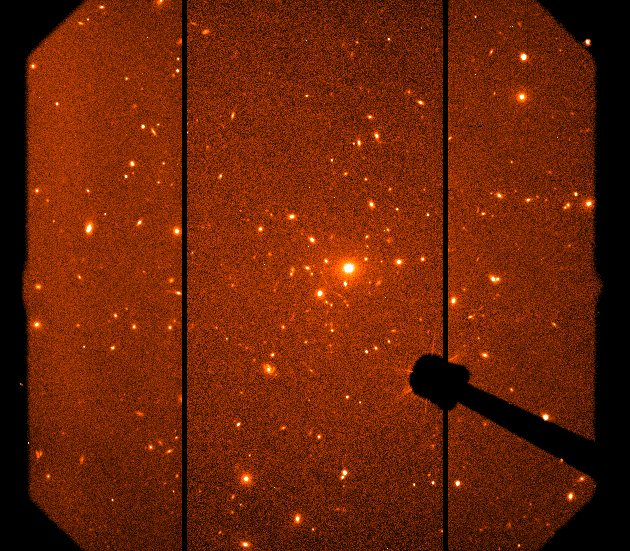 |
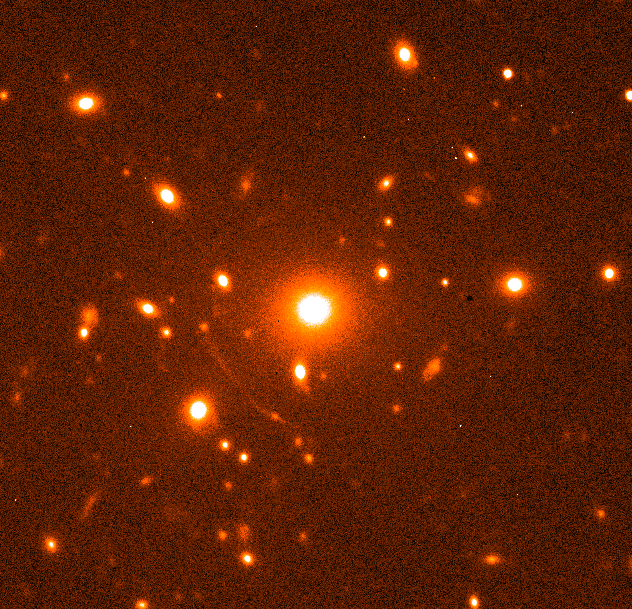 |
A 60s acquisition image of the
galaxy cluster Abell 383 (at a redshift of 0.19), taken with GMOS in
the r-band. Faint gravitational arcs are visible towards the center of
the image. The GMOS on-instrument wavefront sensor probe is also
visible as it guides on a star in the field. The image quality in
this image is 0.58".
Three CCD chips make up the detector array, with a total of over 28 million pixels. The full-frame image covers an area of 5.5arcmin x 5.5arcmin with a pixel scale of 0.072 "/pixel. |
|
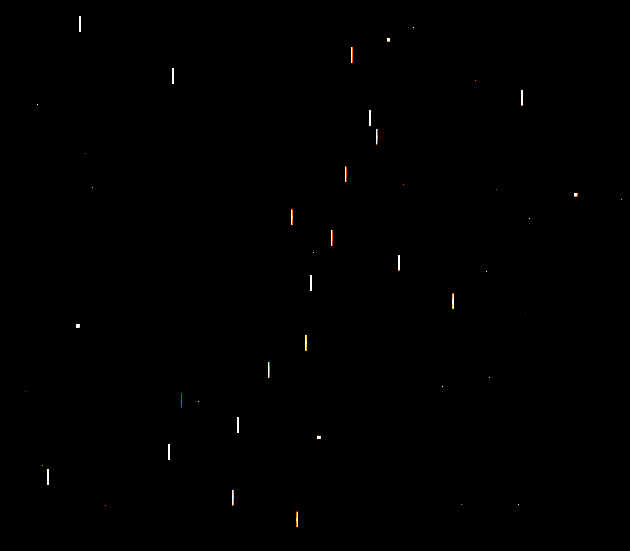 |
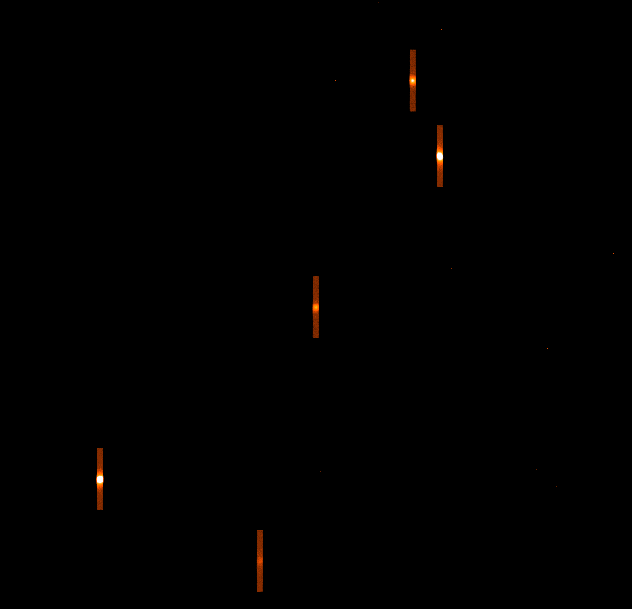 |
After moving the MOS-mask designed for this field into the light path, selected objects align with the slits. This mask has 20 slits, each 1.0" wide. | |
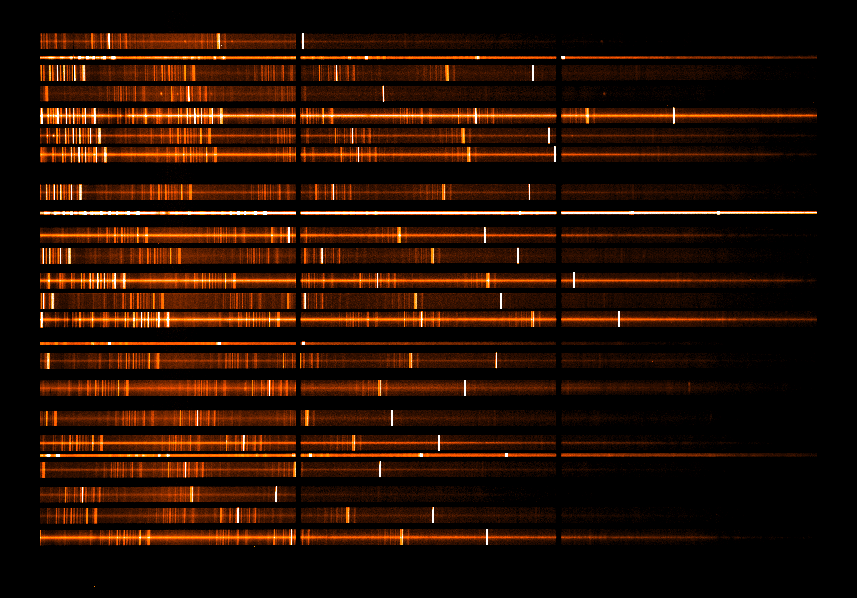 |
 |
The light is then dispersed to produce spectra of each of the selected objects. This Multi-Object spectrum is the combination of three half-hour exposures (longer wavelengths are to the left). Emission lines from the sky are visible as well as emission lines from the faint galaxies. | |
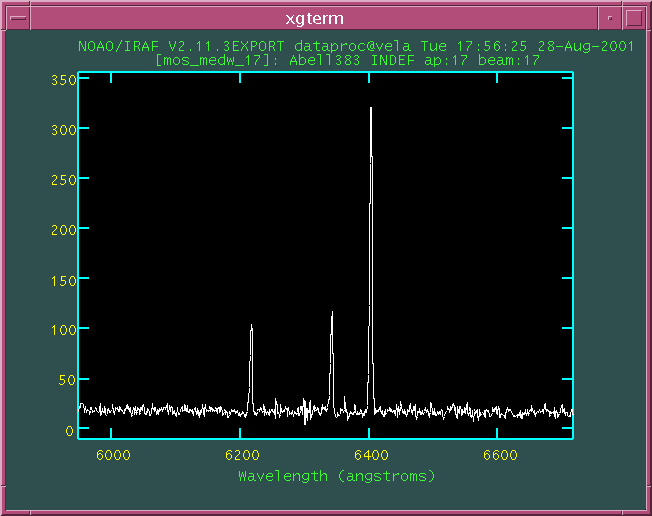 |
This spectrum was
extracted from just a small piece of one of the MOS spectra (roughly
corresponding to one of the magnified sections shown above). The
galaxy in this example has a magnitude of approximately r=21.5. This
section of its spectrum shows a weak continuum with three emission
lines, H-beta and the OIII doublet, at a redshift of 0.28. The galaxy
is therefore more distant than the main galaxy cluster.
This example shows only a tiny fraction of the spectral information contained in the full MOS frame! |
||
Original Aug 27 2001; Isobel Hook
Last update September 27 2001; Inger Jørgensen